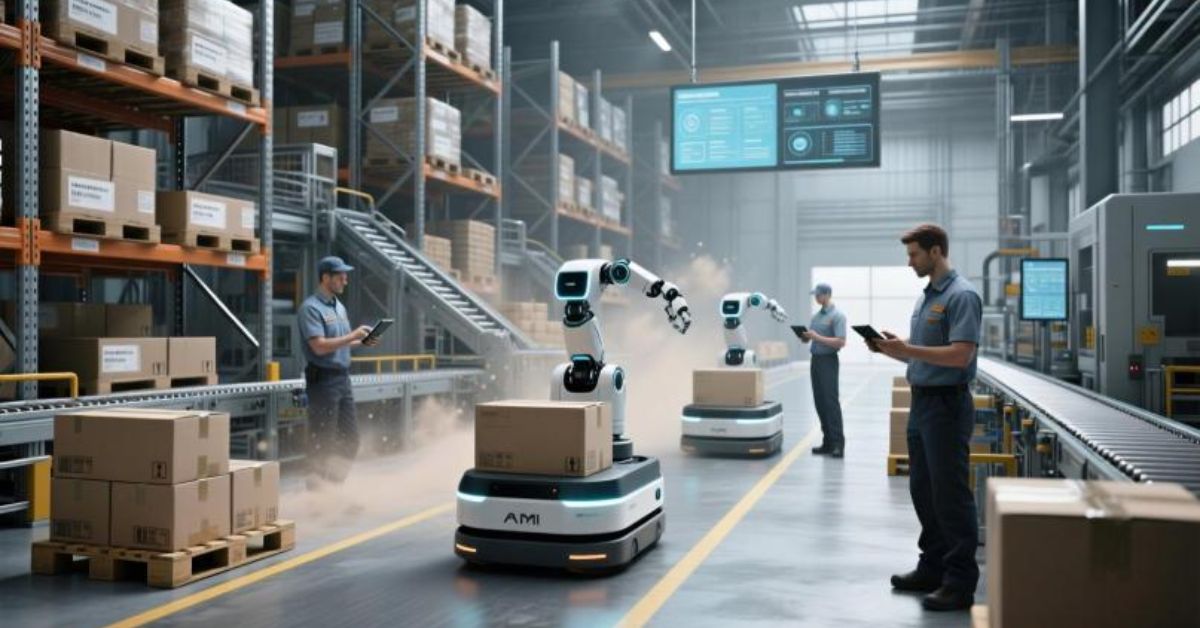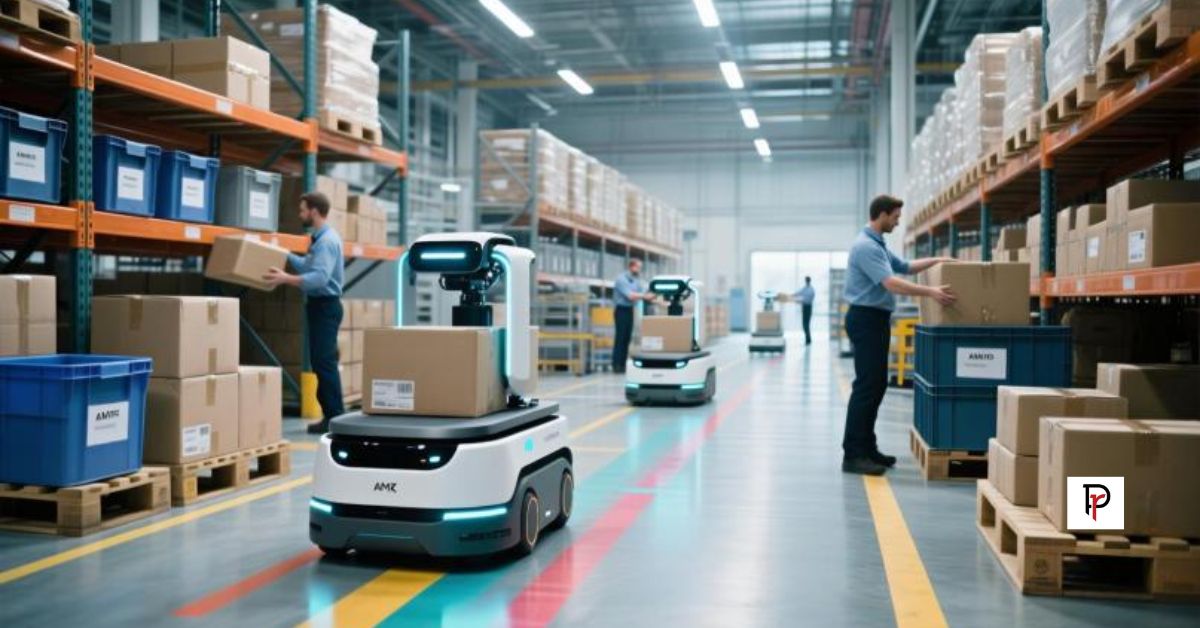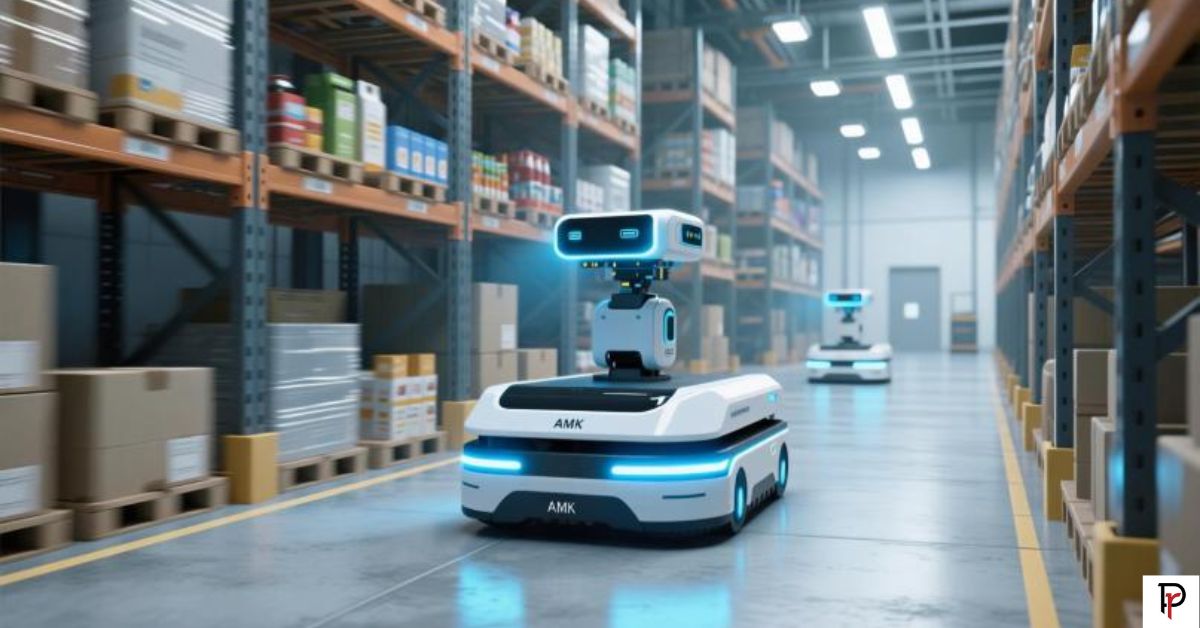Autonomous Mobile Robots (AMRs) are redefining the warehousing landscape. Their integration into logistics and storage facilities has revolutionized efficiency, reduced costs, and enhanced safety. This blog explores how these cutting-edge robots are transforming the warehousing industry, making their mark as irreplaceable assets.
What Are AMRs?
Autonomous Mobile Robots (AMRs) are robots equipped with sophisticated sensors, cameras, and navigation systems. Unlike traditional Automated Guided Vehicles (AGVs), AMRs operate independently without physical tracks or manual programming. This autonomy enables them to adapt to dynamic environments, making them ideal for modern warehousing needs.
The Evolution of Modern Warehousing
Warehousing has come a long way from manual labor-intensive operations. With increasing demand for quick delivery and precision, businesses have turned to technology to reduce inefficiencies. The reliance on robotic solutions, particularly AMRs, has grown alongside innovations like machine learning and the Internet of Things (IoT). Today, AMRs are heralded as a game-changer for facilities striving for higher productivity with fewer resources.
The Role of AMRs in Modern Warehousing

Key Functions of AMRs
AMRs are versatile and perform a variety of tasks. They can transport goods across facilities, sort and organize inventory, and even assist in packing and labeling. With real-time data processing, they can optimize warehouse operations significantly.
For instance, a single AMR can handle lightweight goods continuously without requiring manual intervention, freeing up human workers for more complex tasks. Companies integrating AMRs report shorter lead times and fewer errors in picking and packing processes.
Collaboration with Warehouse Management Systems (WMS)
For optimal efficiency, AMRs integrate seamlessly with Warehouse Management Systems. This interconnectedness allows robots to receive commands directly from centralized software, increasing accuracy in order fulfillment and inventory management. WMS integration reduces time spent on manual oversight, enabling warehouses to process more orders faster.
Collaboration Between AMRs and Workforce
Rather than replacing human workers, AMRs complement them. Workers can perform high-skilled tasks while robots focus on repetitive labor, such as transporting items. This symbiotic relationship enhances overall efficiency and creates a safer working environment.
Benefits of AMRs in Warehousing

The deployment of AMRs yields numerous benefits:
Operational Efficiency
AMRs can operate around the clock, reducing delays. They optimize routes, avoid congestion, and adapt to changes, ensuring goods are moved faster and more effectively.
Cost Reduction and ROI
Although the initial investment can be high, AMRs have a quick ROI due to reduced operating costs. By minimizing labor expenses and lowering error rates, they contribute to improved profitability.
Safety and Ergonomics
AMRs are equipped with sensors to avoid collisions, reducing workplace accidents. Their use also minimizes the physical strain on staff by handling heavy loads or repetitive tasks.
Scalability
Warehouses are often dynamic, with demands fluctuating according to the season. AMRs scale easily, allowing businesses to add or remove robot units based on needs without significant infrastructure redesign.
READ THIS BLOG: Magazine Ransom Note Generator: Create Unique Designs for Your Projects
Real-World Statistics Comparison Table
| Metric | Without AMRs | With AMRs | Improvement (%) |
| Error Rate in Picking | 8% | 2% | 75% |
| Delivery Lead Time | 2 days | 1 day | 50% |
| Annual Labor Efficiency | 70% capacity | 95% capacity | 35% |
| Downtime | High | Negligible | – |
These figures highlight the exceptional potential AMRs bring to warehouse environments compared to traditional methods.
Challenges and Limitations of AMRs
Despite their many advantages, adopting AMRs is not without challenges:
High Initial Costs
The sophisticated technology behind AMRs makes them expensive. Businesses need to carefully assess their financial capabilities before undertaking such investments.
Integration Issues
AMRs may face compatibility issues when implemented within older infrastructures. Ensuring technology alignment between old systems and these robots often requires in-depth planning.
Maintenance and Expertise
Regular maintenance is crucial to prevent disruptions. Companies must also train or hire skilled personnel to manage AMR systems effectively.
Workforce Adaptation
Introducing AMRs can spark anxiety among employees who fear being replaced. Efficient training programs and clear communication about job role transitions can help smooth the adoption process.
The Future of AMRs in Warehousing

Emerging Trends
The future of AMRs promises more advanced capabilities. Modern AMRs will likely incorporate AI to predict inventory trends or analyze warehouse layouts for efficiency improvement. Integration with drones and advanced sensors will only expand their applicability.
AI-Driven Customization
AI and machine learning will enable AMRs to personalize tasks according to warehouse-specific needs. This may involve robots learning from past experiences to fine-tune operations for better results.
Niche Applications
Beyond warehousing, AMRs are extending their reach to healthcare, catering, and retail logistics. Industries that rely heavily on precise and flexible operations will benefit from AMRs’ expansion into niche roles.
Final Thoughts and Recommendations
AMRs represent a powerful movement towards smarter, safer, and more efficient warehousing solutions. As businesses move to stay competitive by adopting technology, these robots will undoubtedly play a central role in transforming how goods are stored, managed, and moved. Companies investing in AMRs today are setting themselves up for long-term success.
Take Action
Interested in modernizing your warehouse operations? Start by evaluating process weak points and consider a pilot program for AMRs. Partnering with industry experts and staying informed through reliable platforms like SocialBiz Magazine can help you make the leap toward impactful innovations.
The Blog Band Thorn-Magazine Site: Look at Independent Music Media
FAQs
What types of warehouses benefit most from AMRs?
AMRs are ideal for warehouses with large-scale operations, high inventory turnover, or those needing greater adaptability to fluctuating demand.
Are AMRs suitable for small businesses?
While initial investments may be high, small businesses can benefit from scalable AMR solutions tailored to their needs.
How do AMRs ensure workplace safety?
AMRs use advanced sensors to avoid obstacles and collisions. They also perform heavy or repetitive tasks, reducing risks to workers.
What kinds of tasks can AMRs not perform?
AMRs are designed for specific roles, such as transport and sorting. Complex tasks requiring human judgment or creativity remain beyond their scope.
Are there government subsidies for AMR implementation?
Some regions may offer financial incentives for businesses adopting advanced technologies. Research your local regulations for opportunities.
